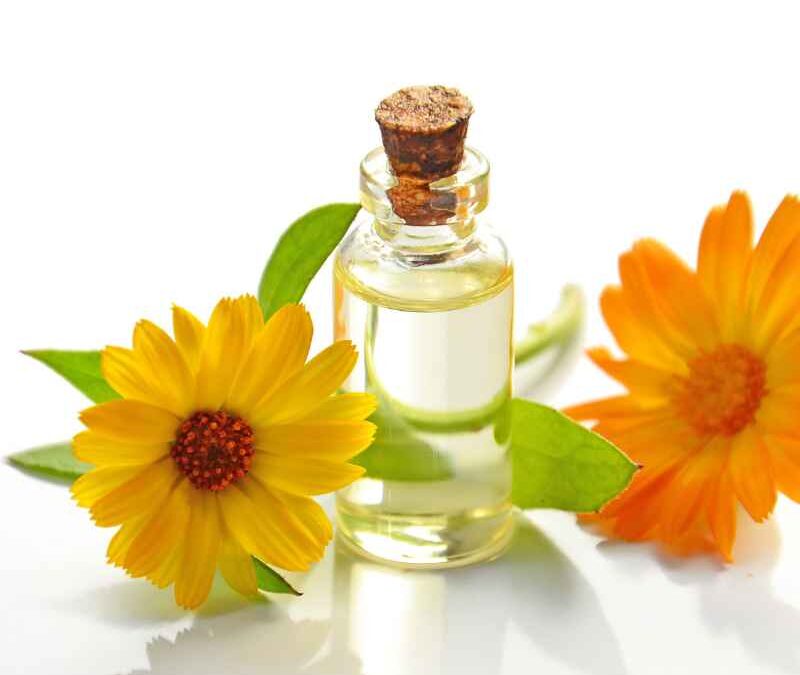The Healing Power of Arnica Oil
A Complete Guide to Nature’s Remedy
Introduction
Welcome to the world of natural remedies! Today, we’re diving into the wonderful benefits of Arnica oil, a potent herbal extract with myriad therapeutic properties. As a certified aromatherapist and herbalist, I’m excited to share with you the wealth of knowledge surrounding this remarkable oil.
What is Arnica Oil?
Definition: Arnica oil is derived from the flowers of the Arnica Montana plant, a member of the daisy family, and is also known as wolf’s bane, leopard’s bane, mountain tobacco, and mountain arnica,
Extraction Process: The oil is typically extracted through maceration, where Arnica flowers are infused in a carrier oil like jojoba or fractionated coconut oil.
Key Compounds: Arnica oil contains powerful anti-inflammatory and analgesic compounds such as helenalin and flavonoids.
The Health Benefits of Arnica Oil
Arnica oil boasts a wide range of health benefits, making it a valuable addition to your natural medicine cabinet:
- Pain Relief: Arnica oil is renowned for its ability to alleviate muscle soreness, joint pain, and inflammation.
- Healing Bruises and Wounds: It accelerates the healing process of bruises, sprains, and minor wounds by increasing circulation and reducing swelling.
- Soothing Skin Conditions: Arnica oil can provide relief from skin conditions like eczema, and dermatitis due to its anti-inflammatory properties.
- Hair Care Benefits: When applied to the scalp, Arnica oil strengthens hair follicles, promotes hair growth, and adds shine to dull locks.
How to Use Arnica Oil
Integrating Arnica oil into your daily routine is simple and effective:
- Topical Application: Dilute Arnica oil with a carrier oil before applying it to the skin to avoid irritation. A ratio of 1 part Arnica oil to 5 parts carrier oil is recommended.
- Skincare Routines: Incorporate Arnica oil into your skincare regimen by adding a few drops to your favorite moisturizer or serum.
- Massage Techniques: Use Arnica oil as a massage oil to relieve muscle tension and soreness. Combine it with other essential oils like lavender or wintergreen for added benefits.
- Hair Care: Mix Arnica oil with your shampoo or conditioner, or apply it directly to the scalp and hair to promote growth and nourish the hair follicles.
Step-by-Step Guide to Making Arnica Oil at Home
Creating your own Arnica oil is a fun and rewarding process. Here’s how to do it:
As an Amazon associate, I earn from qualifying purchases.
Gather Ingredients:
- Dried Arnica flowers (about 1 cup) https://amzn.to/49kylS5
- Jojoba oil (3/4 cup) https://amzn.to/487EUpi
- Fractionated coconut oil (3/4 cup) https://amzn.to/42uDhAV
Preparation:
- Ensure the dried Arnica flowers are clean and free from debris.
- Place the Arnica flowers in a clean, dry glass jar with a tight-fitting lid.
- Pour the jojoba and fractionated coconut oil over the Arnica flowers, covering them completely. If you need to add more oil go ahead, the dried flowers tend to swell and you need to be sure there is enough oil to cover the flowers.
Infusion Process:
- Seal the jar tightly and shake it gently to ensure the Arnica flowers are completely submerged in the oil.
- Place the jar in a cool, dark place, such as a kitchen cabinet or pantry.
- Let the mixture infuse for 4-6 weeks, shaking the jar gently every few days to agitate the ingredients.
- You can speed up the process by using a crockpot. Add a few inches of water to the bottom of the crock pot set the temperature on low and place the covered jar of arnica flowers and oil in the crockpot for 10-12 hours adding more water if needed.
- I like to use jojoba and fractionated coconut oil because they both have a long shelf life and jojoba oil mimics the skin’s natural sebum. However, you may have a favorite carrier oil such as olive oil, or sweet almond oil. Feel free to mix and match different oils as long as the measurements stay the same.
- When choosing a carrier oil for your DIY arnica oil consider allergies, such as coconut or almond allergies.
- Choosing the best carrier for handcrafted massage oils
Straining and Storage:
- After the infusion period, strain the oil through a fine-mesh sieve or cheesecloth into a clean, sterilized glass bottle.
- Press the flowers to extract as much oil as possible.
- Store the Arnica oil in a cool, dark place away from direct sunlight. It can last for up to one year if stored properly.
Potential Side Effects and Precautions
While Arnica oil is generally safe, it’s essential to be aware of potential side effects:
- Allergic Reactions: Some individuals may experience skin irritation or allergic reactions to Arnica oil. Perform a patch test before use.
- Safety Guidelines: Pregnant and breastfeeding women should consult with a healthcare professional before using Arnica oil. It’s also wise to avoid using it on broken skin or open wounds.
Where to Find Quality Arnica Oil Products
When purchasing Arnica oil, look for reputable brands and suppliers that offer high-quality, organic products. Online marketplaces and health food stores are excellent places to start your search.
Adding Essential Oils
Adding specific essential oils and essential oil blends to arnica oil can enhance the performance. Here are a few essential oils to add to arnica oil.
- Lavender Essential Oil: https://amzn.to/4blAYEm
- Benefits: Lavender oil has calming and soothing properties, making it ideal for relaxation and stress relief. It can also aid in reducing inflammation and promoting skin healing.
- Peppermint Essential Oil: https://amzn.to/496JMMR
- Benefits: Peppermint oil provides a cooling sensation and can help alleviate muscle tension, headaches, and migraines. It has analgesic properties that complement Arnica oil’s pain-relieving effects.
- Eucalyptus Essential Oil:
- Benefits: Eucalyptus oil is known for its invigorating scent and respiratory benefits. It can help clear congestion, ease breathing, and provide relief from respiratory issues. Additionally, it has anti-inflammatory properties that can enhance the effects of Arnica oil on sore muscles and joints.
- Ginger Essential Oil:
- Benefits: Ginger oil has warming properties that stimulate circulation and promote blood flow. It can help relieve muscle pain, arthritis, and joint stiffness. When combined with Arnica oil, it can enhance its effectiveness in reducing inflammation and pain.
- Young Living’s PanAway Blend https://amzn.to/3waqDew(contains Wintergreen, Helichrysum, Clove, and Peppermint essential oils): My personal favorite!
- Benefits: PanAway is specifically formulated to provide relief from minor aches and pains associated with everyday activities or exercise. It contains analgesic and anti-inflammatory oils like Wintergreen, Clove, and Peppermint, which complement Arnica oil’s pain-relieving properties. Helichrysum oil also contributes to its ability to promote skin healing and reduce inflammation.
Conclusion
Arnica oil is a true gem of nature, offering a multitude of benefits for holistic wellness. Whether you’re seeking relief from pain, healing for bruises and wounds, or nourishing your hair and skin, Arnica oil has you covered. Embrace the power of this natural remedy and experience the transformative effects for yourself. Here’s to your health and vitality!
Have fun creating a life that naturally makes scents!
The information provided here is intended for educational purposes only and is not a substitute for professional medical advice, diagnosis, or treatment.



